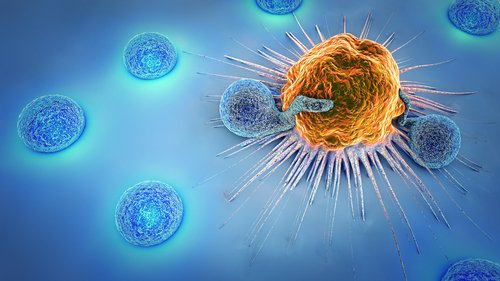Researchers have identified a subset of immune T-cells that improve the effectiveness of immunotherapies in lung cancer, and may help identify patients more likely to respond to such therapies.
Their study, featured in the scientific journal Nature Immunology, shows that patients with large number of these cells in their tumors were 34 percent less likely to die.
The study, “Tissue-resident memory features are linked to the magnitude of cytotoxic T cell responses in human lung cancer,” received funding from Cancer Research UK and was conducted by researchers at both England’s University of Southampton and California’s La Jolla Institute for Allergy & Immunology.
“The immune system can play a powerful role in fighting lung cancer, and this research sheds more light on the interplay between cancer, our immune system, and immunotherapies,” Dr. Justine Alford, senior science information officer at Cancer Research UK, said in a news release.
“Cancer Research UK is focusing more research on hard to treat cancers, like lung cancer, where survival has remained stubbornly low,” she said. “And research like this is crucial to understanding why some people with lung cancer respond well to treatment and, in future, could guide more personalized treatments for patients.”
Researchers conducted a detailed analysis of the immune T-cells found within tumors of patients with lung cancer.
They identified a particular subset of T-cells that demonstrated toxicity against cancer cells, to what they called tissue-resident memory T-cells or TMR cells. The researchers found that patients who more of these TMR cells within their tumors had a 34 percent lower risk of dying.
This positive anti-cancer effect was not only due to TMR cell numbers but also to the way the cells behaved. When clustered together, these cells showed increased proliferation and anti-cancer activity, an effect that was independent of the presence of other subsets of T-cells.
Overall, these findings suggest that when present within a tumor, TMR cells work together to attack the cancer cells and protect the host.
Detecting such cells in patients with lung cancer might aid clinicians in identifying patients who could benefit the most from immunotherapies. Researchers further suggest that these cells could be used as template to develop vaccines to improve the efficacy of immunotherapies.
“These are hugely exciting results,” said Christian Ottensmeier, a Cancer Research UK scientist at the University of Southampton and co-senior author of the study. “For the first time, we have a real indication of who might benefit from a particular drug before we make treatment decisions. So far when we use immunotherapy we do not know if a patient will benefit. The new findings are a big step towards making this exciting treatment much more predictable.”
He added: “Our results will also make the treatment pathway more reassuring for our patients. And if we can translate our finding into clinical practice, then we will also save patients unnecessary side effects and reduce costs to the National Health Service.”


